Star Wars: Shadows of the Empire
N64, PC - LucasArts, 1997
After the first two Rogue Squadron retrospectives, I began playing the third and final Factor 5 Rogue Squadron game, RS3: Rebel Strike. After ten minutes it was obvious I had to put it down have a little interlude for the inspiration for the entire series: Shadows of the Empire. The reasons for this will be clear to anyone who has played RS3 before (I was not one of those people).
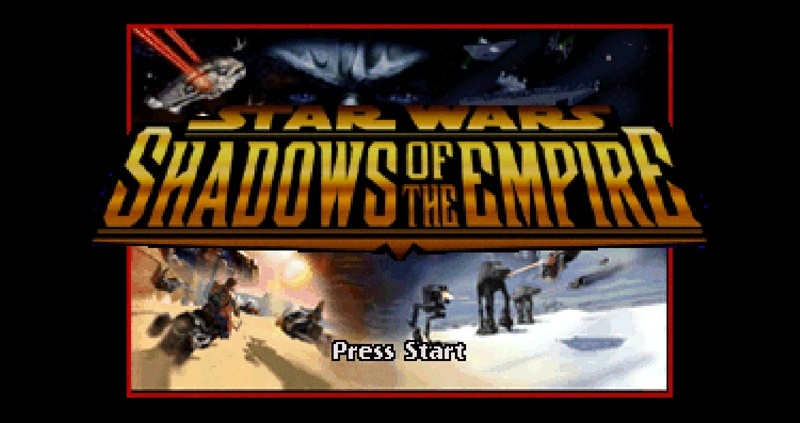
The Multimedia Experience
Shadows of the Empire was a huge endeavor by Lucasfilm to drum up hype for the Star Wars prequels by creating a full multimedia product: a book, comic book, video game and an orchestral soundtrack (by the prolific Joel McNeely who has prior with Lucasfilm on The Young Indiana Jones Chronicles). There was merchandise as well of course, everything except a movie. As noted gamer Steven Spielberg and George Lucas were close, I wouldn’t be surprised if this ‘movie without a movie’ approach inspired Spielberg in his vision for Dreamworks Interactive and Jurassic Park: Trespasser. In turn that is the game that inspired the creation of this website and, slightly less importantly, the game Gabe Newell admits inspired Half-Life 2 (Valve, 2004).
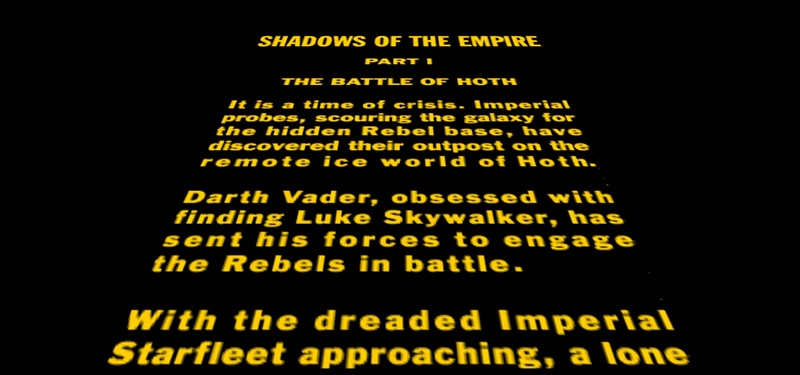
LucasArts were a powerhouse at this point in time, and had a lot of input into the project. It was game designer Jon Knoles who changed the setting of the whole project to between The Empire Strikes Back and Return of the Jedi films, with new characters. Knoles worked on many LucasArts games including X-Wing (1995) and their part in Rogue Squadron. Fact of the day: Knoles is also the model for Dash Rendar’s Star Wars collectible card game portrait.
Dashing 3D Renderer
Cool dude Han Solo is currently encased in carbonite and couldn’t be included for players and readers, so Dash Rendar was designed as a fill-in. He looks and acts like Han, with the same job and a very similar ship. It’s totally not Han, dude. The game's events intersect with the book’s storyline, and the same was true for some of the comic books. In 2025 we’re used to these kinds of interwoven storylines like the Marvel Cinematic Universe, but it was all very exciting at the time.
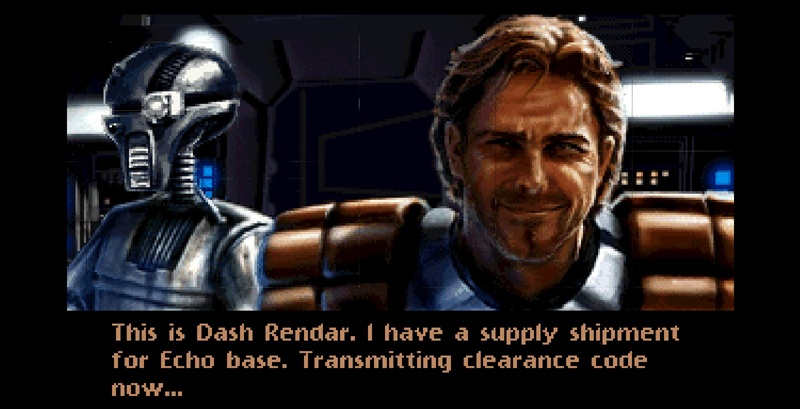
While it didn’t make the N64 North American launch date, Shadows was a European launch title, and was in development long before. Emulated on a supercomputer because the hardware wasn't ready, it was mocked up with build engine tools used for Star Wars: Dark Forces (LucasArts, 1995). LucasArts successfully lobbied Nintendo to upgrade their cartridge to 12MB so they could get orchestral music in the game instead of lower-quality MIDI. Anyone who had this on the N64 knows it was worth it because the relatively short loops of soundtrack are ingrained in their minds forever more. The same goes for the rest of the excellent Star Wars sound effects, you will even be treated to a classic ‘Wilhelm scream’ if you manage to shoot a stormtrooper off the edge of a cliff.
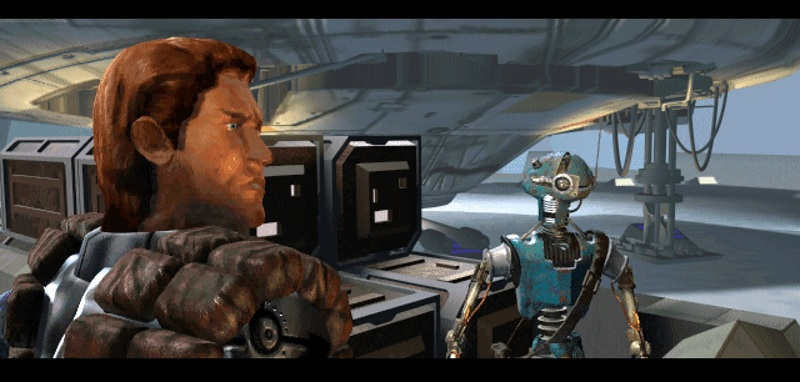
The PC port a year later had some extra features like full motion cutscenes with voice acting and full orchestral tracks instead of short loops. The graphics were better while still playing a lot smoother, but it's also a little jankier in presentation. The mouse controls also helped in certain levels, which makes some parts a bit less frustrating and more fun. The original website also says the PC version has improved AI, but I didn’t notice. Presumably this was possible because they were not limited on processing power on the N64, much like RS1 had to limit their enemy AI to predetermined paths. The PC version reviewed worse for the jank however, and because it wasn’t particularly ground-breaking for a PC game. The general consensus seems to be that console is the way to go, even now.
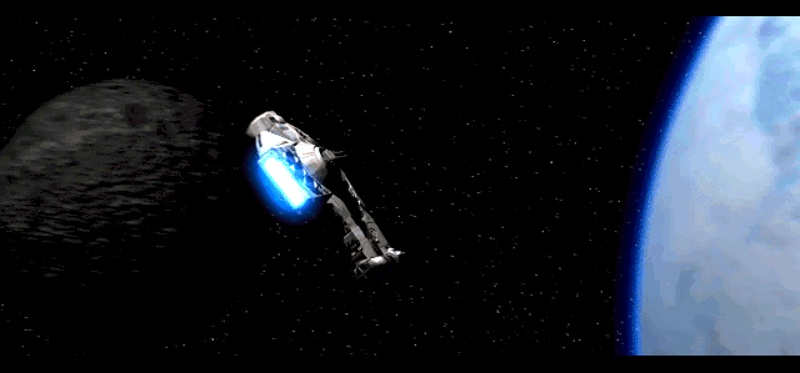
Multi-Level Marketing
Whichever version you play, the (in)famous level gameplay styles are the same. This format is certainly not new to LucasArts, and they took a similar approach with Star Wars on the NES, SNES, and with Rebel Assault 1 and 2 (LucasArts 1993, 1995). Even Factor 5 worked on the Indiana Jones SNES game and, unsurprisingly, copied the LucasArts approach.
But this was a new generation and games were getting serious. Games with extensive worlds to explore, deeper systems to interact with, real physics and simulation. Having inch-deep but mile-wide games did not cut it anymore. Worse, making a new 2D style of play doesn't take much effort. Creating a new 3D camera, control and graphical scheme just for a couple of levels was no longer a viable amount of work. How can the depth and quality of a single level with three months of dev time compete with an entire game perfected over two years?
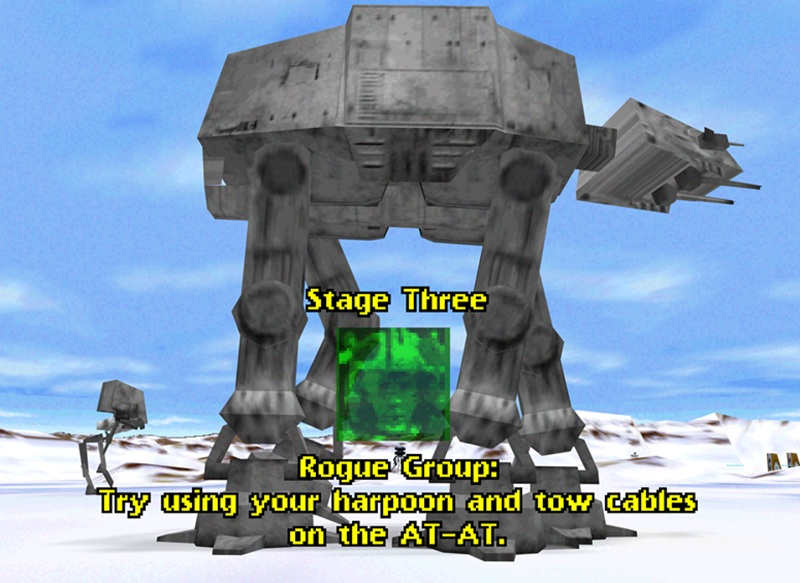
The late Mark Haigh-Hutchinson — who also worked on the Lucasarts side of RS1 — agrees in a Gamasutra postmortem. “Probably the most important lesson […] is that of focus. Do one or two things and do them extremely well.” They bit off more than they could chew, and given the 100-hour weeks they describe in order to get the game out for launch, just imagine what they could have done if given more time. “Our ambitions were well placed in trying to provide the player with as much variety as possible, we effectively had to write five different game engines.”
This is no longer theoretical, with Rogue Squadron 1 expanding the flight levels and Episode 1: Racer (LucasArts, 1999) for the speeder level, as well as the later Jedi Knight games among others for Star Wars third-person shooters. But was RS1 really better? People usually compare it to the first and best level, Hoth, and move on. But Shadows has a sylop up its sleeve.
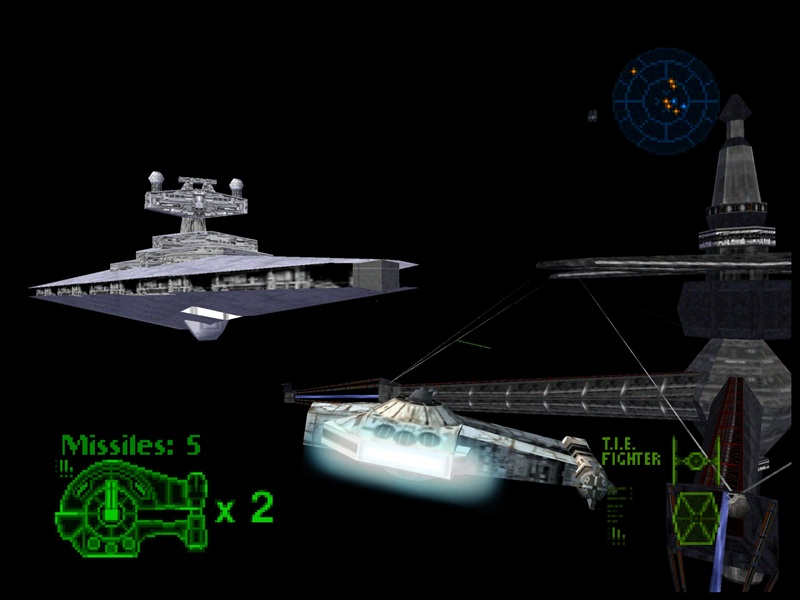
The Forgotten Space Battle
Shadows’ last level is a Death Star 2 style space battle with six-degrees-of-freedom movement, something which RS1 never had despite Factor 5’s technical prowess. It also features a Star Destroyer and a space station for good measure, and what’s more, none of the reviews, interviews or retrospectives I’ve scoured in my research for this and the three Rogue Squadron games mention this at all, only Hoth. Space battles were a big selling point in RS2 and F5 often mentioned they couldn’t do this on the N64, I find this surprising that it has gone down a memory hole.
In this mission you dogfight around a space station, fly through it to blow up the generator, and fly out the other side. Do this four times, once for each ‘arm’ of the station, and you’re done. It’s Shadows’ nod to the Death Star 2 battle, and a better effort than RS2’s version. (It also strongly reminded me of something, and after some brain-wracking I found it was the very similar ‘Signal to Noise’ mission of Star Wars: Squadrons (Motive Studio, 2020). I was also lucky enough to play Squadrons in VR but no longer. RIP Windows Mixed Reality).
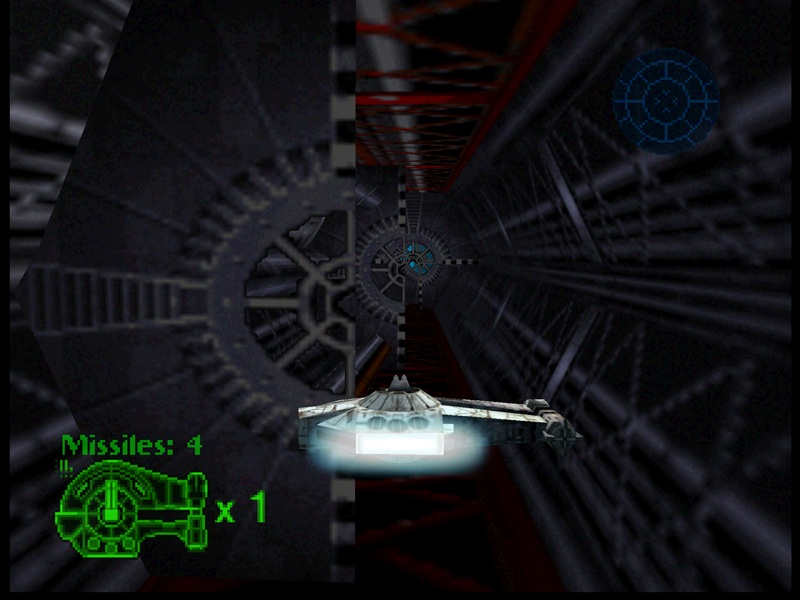
Obstacles in the space station block off half of the tunnels, meaning that you can speed up and rotate your ship to fit through the gaps perfectly, but are more likely to crash. It’s a classic risk/reward mechanic that adds challenge and makes you feel cool. You do this by holding A to accelerate, which also rotates your ship instead of turning it. This way you can fly around with 6DOF as much as you like. Let go, and the ship will right itself again.
It’s a similar system to Factor 5’s games, but somehow feels less jarring and more useable. It’s almost as fun as Hoth and it did feel like a space battle. With no enemy AI chasing you, the shooting is more like RS1’s faux dogfighting, but the main problem is the same as in the RS2 space battles: it’s still quite hard to see the enemy. Frustratingly, the first half of the mission is a turret shooter level, and it does have X-Wing style target markers around enemies (and additional lock-on target markers) yet they took them away for the space shooter part!
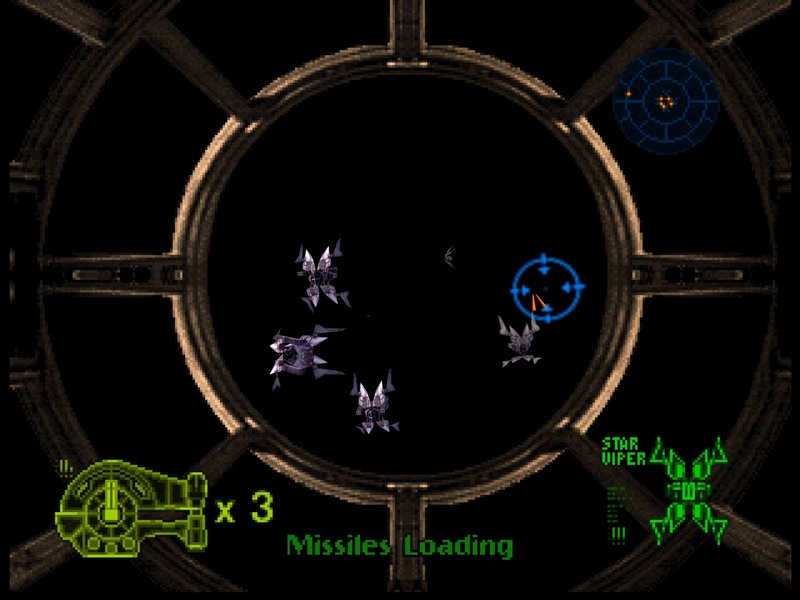
Comparisons to X-Wing aren’t as crazy as they sound. On the Force Material podcast Knoles says they tried to work on an X-Wing style N64 game before moving on to Episode 1: Racer. Then again he also says that was a crazy idea that probably wouldn’t have worked, but it is an obvious route to try.
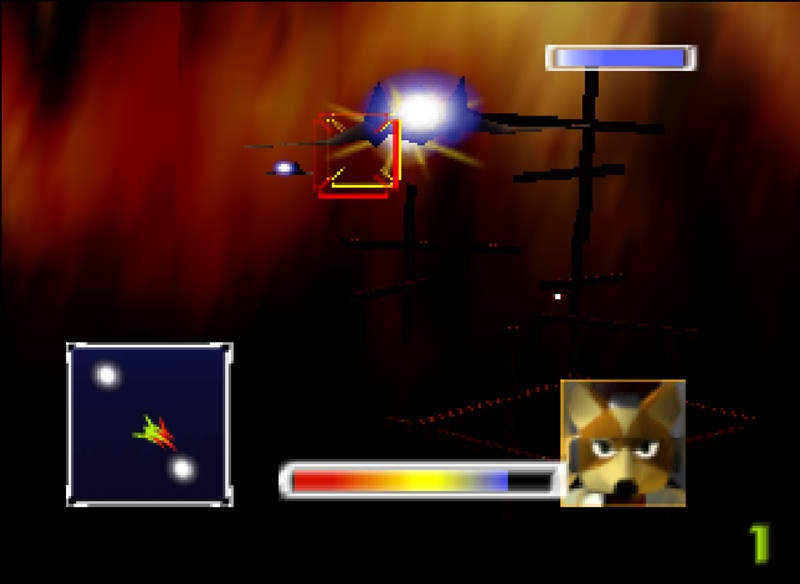
Star Fox 64 (Nintendo, 1997) is a different type of game and mostly linear shooter, but it has 'all range' sections and multiplayer modes, both of which are small free-roaming arenas to battle in. While the craft and game in general is much simpler than the Star Wars flying games, the controls and aiming are more pleasing and less twitchy as a result.
The important thing is that the enemies always stand out against the backdrops, and have a bright engine light just to make double-sure you can see what you're firing at. They also have target and lock-on reticules to make triple and quadruple-sure.
Perhaps they learned lessons from Shadows' earlier release. RS1 didn't have space battles so never had the visibility problem, but I'm not sure Factor 5 ever played Star Fox 64, since they didn't learn any obvious lessons from it in their subsequent games.
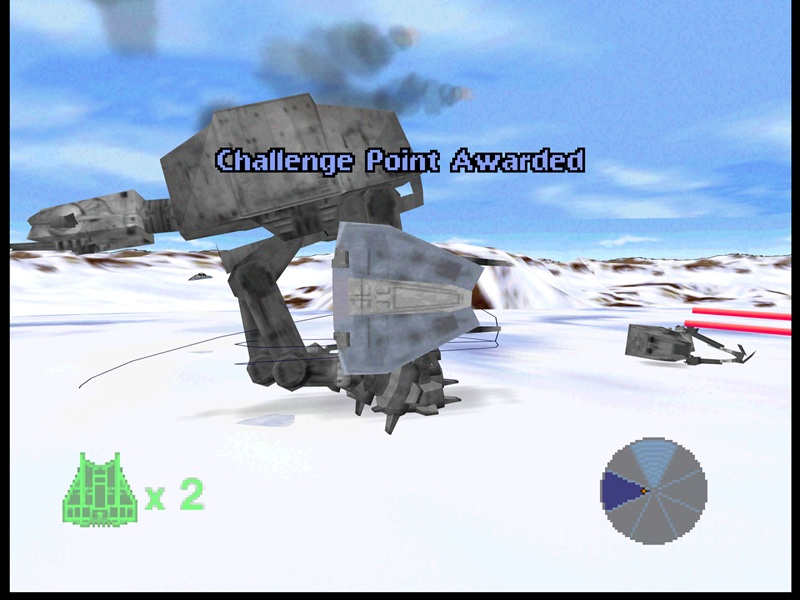
The Behem-Hoth
A full comparison of the famous Hoth level for another time, but although Factor 5 had a lot of work to recreate this in a new engine, it’s all already fully formed here. The controls, the radar, the objective markers. The flight model is much tighter, your objectives are always clear, it’s pure arcade fun. You can speed up to avoid blaster fire, but it’ll be harder to aim. Compare this to RS2 where there is no way to avoid being constantly hit, and you’re often unsure what your objective is until you fail a few times.
In the aforementioned podcast Knoles drops a bombshell: the iconic AT-AT tow cable takedowns were only put in the game last-minute, in earlier versions you had to grind the AT-ATs down with blasters. The team couldn’t find a technical solution to having bendy tow cables until late in development (this technology would later be used for the pod engine cables in Episode 1: Racer
Looking down on an AT-ST from a Snowspeeder was amazing, and the wow-factor continues in the very next level, as you look up at one from ground-level.
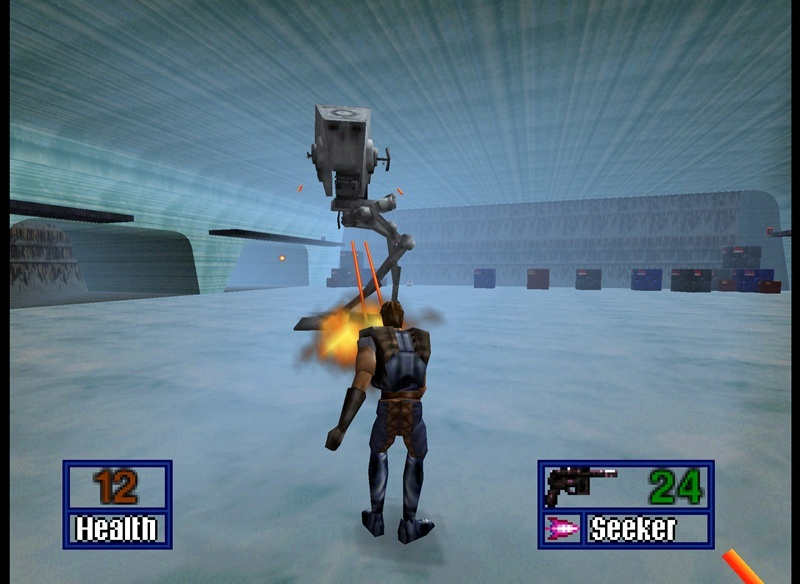
Rogue Squandered
The controls are mainly what separate the third-person levels from its contemporaries. Dash has Tomb Raider (Core Design, 1996) style tank controls, but nowhere near as tight and deterministic and without the agility of Mario 64 (Nintendo, 1996). Quite the opposite in fact, they are so ridiculously floaty, you will walk or jump off cliffs with regularity not as a result of challenging platforming, but just poor controls. The camera is not bad and doesn’t suffer from clipping. It swings behind you automatically like in Tomb Raider but lags too far behind your input, making it even harder to get your jumps and movements right.
The only thing worse than floaty platforming is floaty platforming on a moving train. The train level still lives in my mind rent free after 30 years. Trying to jump along the train carriages while the train turns will send you slowly floating off the side of the train while you watch helplessly. This will happen many times. There is a jetpack level which is much more fun, and lends itself to the floatiness.
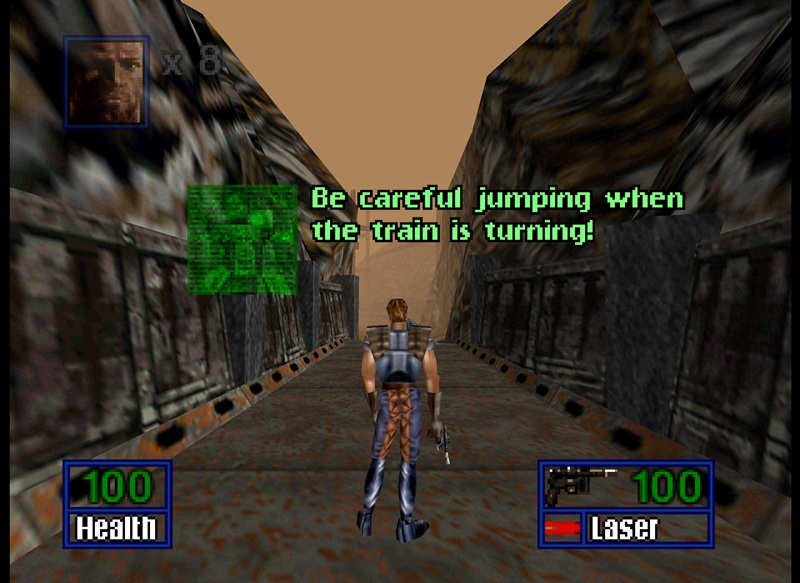
Aiming isn’t difficult due to generous auto-aim. Your blaster aims randomly within a small cone, which does make it feel quite Star Warsy. You’re not a sniper, you're a smuggler blasting away against equally inaccurate stormtroopers. But also you can pick people off from afar if you’re willing to get RSI spamming the shoot button. There are no penalties for this. Enemies are bullet sponges and have a being-shot animation which also helps with the difficulty in controlling and aiming.
Sometimes the first person is the best way to go and, just like cockpit view in flight levels, is a valid way to play the whole game. Unfortunately this just gets you out of the Mario-64-comparison frying pan and into the Goldeneye-comparison fire (Rare, 1997). Unfortunately while not as bad as many claim, it doesn’t survive either comparison.
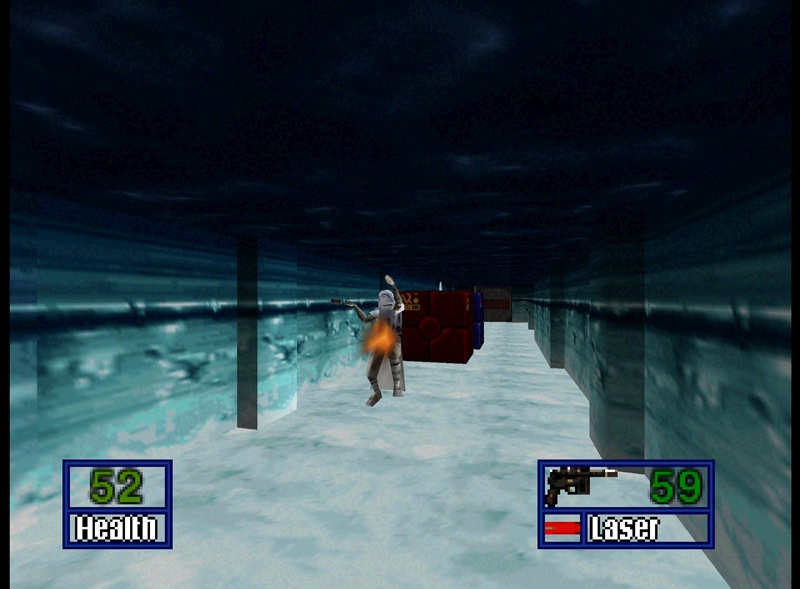
Swoops-a-Daisy
Turret shooter bits are a reasonable bit of fun, but the other main activity was chasing criminals around Mos Eisley on a swoop (speeder) bike. It’s no Mario Kart 64 (Nintendo, 1996), but it’s not trying to be a racing game. It’s about the challenge of going as fast as you can without dying. The closest comparison would be Episode 1: Racer, which this dev team went on to make after Shadows.
The enemies elastic band so you can, and must, take them one at a time by nudging them into a wall, Road Rash (EA, 1991) style. They can’t kill you, but it’s easy to crash. That’s true of the book and comic, as well as the giant redwood forests of Return of the Jedi, so I don’t accept that criticism. You quickly learn that you need short controlled bursts of throttle to stay alive in the windy streets of Tatooine or in Beggar’s Canyon.
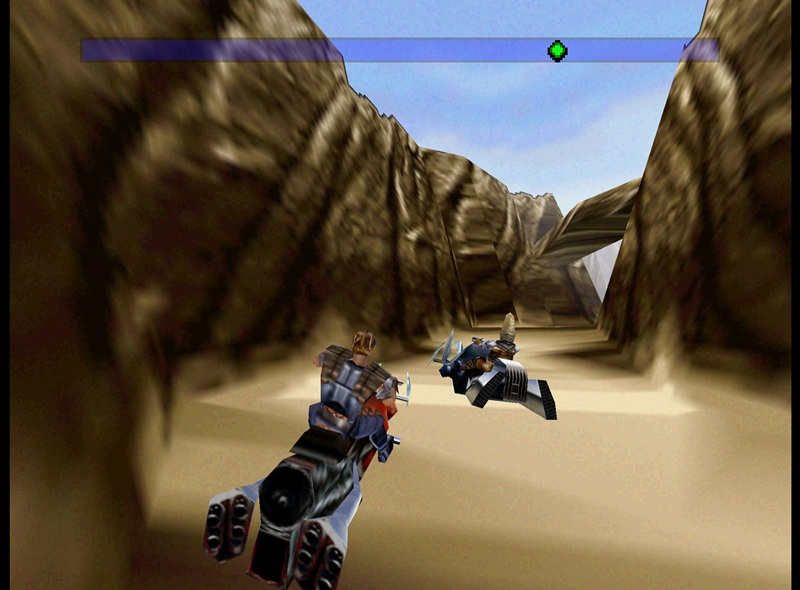
Shadows of Greatness
It’s sad because you can see the intention, and imagine what could have been. Shadows is often derided for being a jack of all trades, master of Hoth and though the worst sections are not that bad, and less egregious on PC, they are not all up to the standard of the opening level.
An IGN review of the time puts it perfectly: once having finished it, you knew that the developers from LucasArts could have orchestrated a much better piece of videogaming.”

LucasArts are one of the greatest developers ever, so perhaps with a bit more time in the oven the game could have been an undisputed classic. With RS1 LucasArts and Factor 5 did what everyone, developers included, admits they should have done the first time around: focus on the Hoth style levels. In RS2, Factor 5 watered down this perfect distillation, adding the turret and space battle levels from Shadows.
Next up, RS3 goes one step further, inexplicably finally adding the remaining speeder and third-person levels to make Rogue Squadron 3: Rebel Strike. Could they succeed where Shadows failed?
